Since the emergence of the first humanoid robots — which took place in the second half of the last century — the industry has evolved significantly.
Today, robots evoke not so much admiration and amazement as they do fear for our own future. They mimic our behavior, are capable of independent reasoning, and can interact with other robots (hmm, or was that a human?). It’s becoming increasingly difficult to distinguish a robot from a real person. Here are the top 5 most anthropomorphic humanoid robots worth taking a closer look at:
Sophia
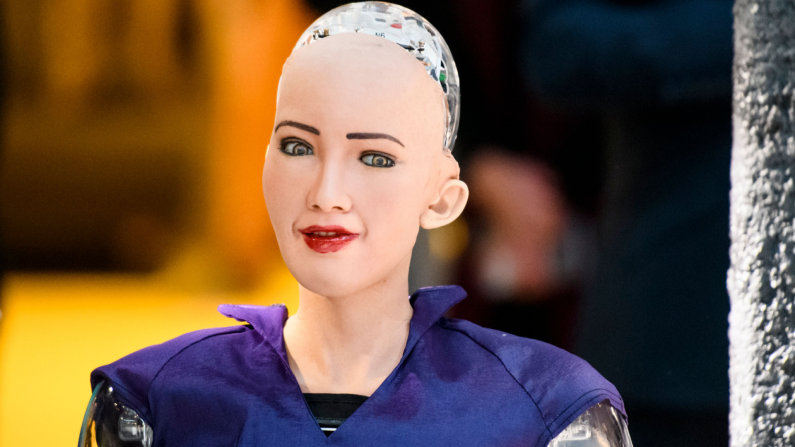
The Hong Kong-based company Hanson Robotics unveiled the robot Sophia in 2015. Her creator is David Hanson, the founder of Hanson Robotics. He is also the “father” of the headline-grabbing robots Albert HUBO, with the head of Albert Einstein, and Philip K. Dick, who not only resembles the American writer but is also programmed to communicate with people in the same manner Dick once did himself. Yet it is Sophia who is considered one of the most popular robot celebrities in the machine world, thanks to her appearances on various television shows. For instance, just a few years after her “birth,” Sophia appeared on Good Morning Britain as a guest — accompanied by her creator.
Previously, Sophia had been a guest on The Tonight Show with Jimmy Fallon. The robot was remarkably adept at recognizing and expressing human emotions and even learned to play “rock-paper-scissors,” though it must be admitted that viewers and hosts were somewhat unsettled by Sophia’s extremely lifelike appearance and behavior. The robot has also appeared on television shows in other countries — for example, she was a guest on Evening Urgant in Russia, and in the Indian city of Mohali, she gave an in-depth interview to a journalist (she speaks several dozen foreign languages). Before that, Sophia even graced the cover of Cosmopolitan India in 2018.
Sophia’s appearance was inspired by the looks of Audrey Hepburn. She stands about 1.7 meters tall. Her “skin” is made from a special elastic material called Frubber (a combination of the English words “flesh” and “rubber”). Cameras are embedded in her eyes for facial recognition. She also possesses integrated artificial intelligence.
Sophia is a true pioneer. In 2017, she was granted citizenship by Saudi Arabia — the first time in history that a humanoid robot received official citizenship. After her upgrade in 2019, her abilities expanded to include over 60 facial expressions and computer vision, and she even painted a picture. That painting was later sold for $700,000. It also became the world’s first NFT token created by a robot.
Although Sophia’s peak popularity came between 2018 and 2020, Hanson Robotics continues to improve her software and is developing new robots based on Sophia’s technologies.
During the pandemic, in 2021, Hanson Robotics introduced a serious rival to Sophia — a nurse robot named Grace. She specializes in caring for the elderly and can measure temperature, pulse, and other patient indicators. Grace speaks three languages: English, Mandarin Chinese, and Cantonese.
Atlas
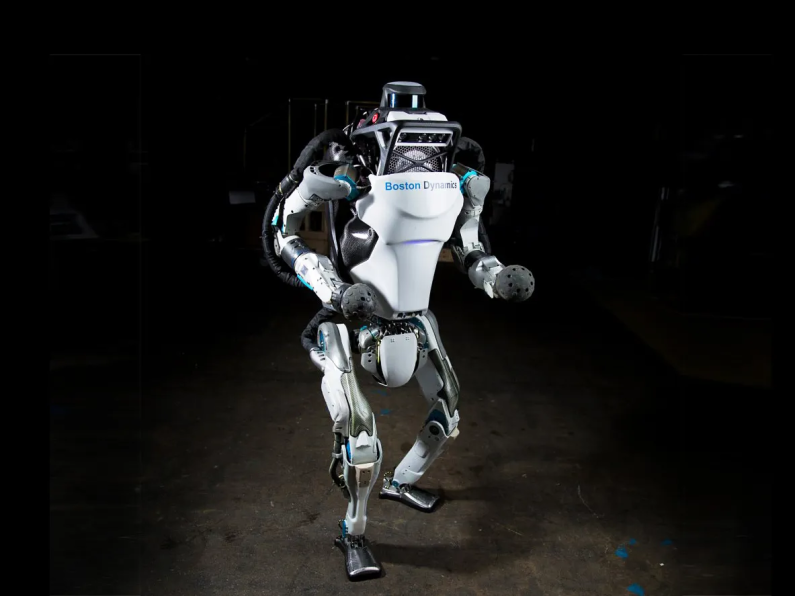
Boston Dynamics, an engineering company specializing in robotics, developed the first Atlas robot back in 2013 as part of a U.S. Department of Defense competition. At the time, the robot was quite large — nearly two meters tall and weighing up to 150 kg. It was also tethered to an external power source, but was already capable of walking and manipulating objects. Recently, the developers unveiled a new version of the humanoid. It has become the first fully electric robot, as the creators have completely abandoned hydraulics. Moreover, the robot now has an extremely wide range of motion.
Atlas is one of the most advanced humanoid robots in terms of mobility and physical activity. It can run, jump, somersault, and overcome obstacles. Atlas climbs stairs with ease and performs complex acrobatic maneuvers, including backflips. It moves very smoothly, almost like a human, thanks to specially designed flexible joint actuators.
Atlas stands about 1.5 meters tall and weighs 80 kg. Its head, torso, and limbs can rotate 360 degrees. The robot is also equipped with a set of stereo cameras and artificial intelligence. Interestingly, the robot is slated for employment — Atlas will be working at a Hyundai factory (the automaker owns Boston Dynamics). There, its potential and capabilities in the automotive industry will be tested.
Marc Raibert, the founder of the company behind Atlas, believes that their robot served as the inspiration for Elon Musk’s own humanoid robot project — Optimus.
Optimus
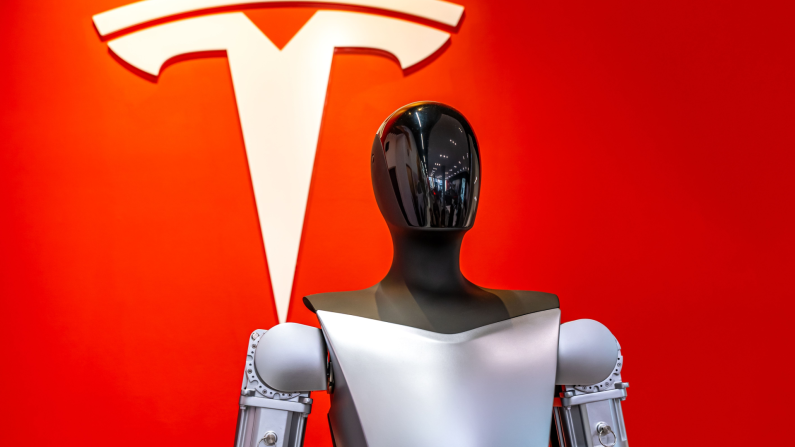
No collection of technological devices would be complete without at least one of Elon Musk’s inventions. The humanoid robot Optimus is not the billionaire’s first creation of this kind. The first model, initially called Tesla Bot, was unveiled in 2021, then improved in 2022. In 2023, Optimus Gen 2 was introduced. Its primary purpose is to perform dangerous tasks and automate routine processes. Musk himself claims that this robot can do anything your imagination can conceive.
Optimus stands just over 1.7 meters tall, but is relatively lightweight, weighing only 57 kg. It can lift and carry loads heavier than its own weight — up to 70 kg. It can also reach speeds of up to 8 km/h. The robot moves independently, using sensors and cameras similar to those in Tesla cars. It can locate and connect to charging stations on its own, and autonomously navigate unfamiliar spaces relying solely on its camera data.
Optimus is powered by self-learning AI. Thanks to tactile sensors in its hands, it handles even delicate objects with great care. For example, it can pick up chicken eggs without cracking them. Optimus is expected to continue evolving and will eventually be capable of performing increasingly complex tasks — including household chores such as cleaning, cooking, and home maintenance.
Ameca
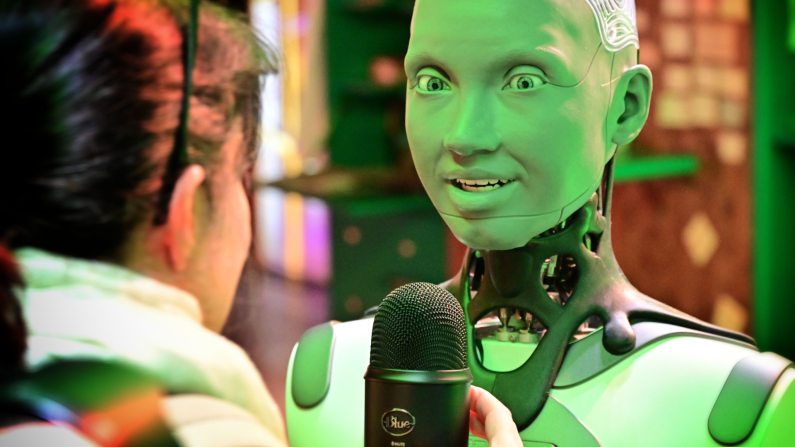
The robot was developed by the British company Engineered Arts in 2021. As of today, Ameca is considered one of the most human-like robots, particularly due to its facial expressions, ability to convey emotions, and engage in meaningful dialogue with interlocutors. This is because the robot was created primarily for interaction with humans.
Ameca stands 1.8 meters tall. Its appearance, of course, is not entirely realistic, but its facial features and body structure are anatomically accurate. The realism of its facial expressions is achieved through an extremely sophisticated system of specialized electric motors — servomechanisms. The robot is powered by the Tritium system — a proprietary development by Engineered Arts. This system is highly modular and capable of learning, allowing the robot to quickly acquire new skills.
Artificial intelligence is also integrated into Ameca. Engineered Arts continues to actively develop and implement new algorithms for speech recognition and response generation, as well as to enhance the expressiveness of its movements and emotional range. In the future, the robot could be used as a consultant or assistant in various fields.
Digit
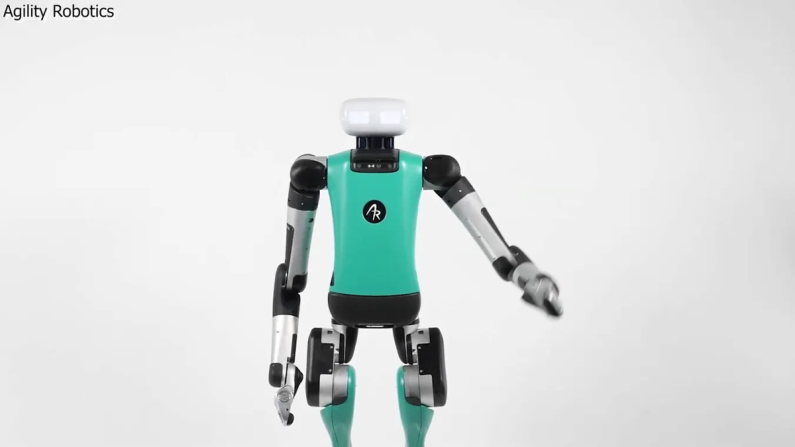
The American startup Agility Robotics introduced its robot back in 2019. It was developed based on an earlier project — a bipedal non-humanoid robot named Cassie. Over time, the humanoid Digit acquired a head and began to resemble a human, although compared to the robot Sophia, it is not particularly lifelike.
The robot stands approximately 175 cm tall and weighs 65 kg. With fully developed arms and legs, Digit is capable of retrieving packages from shelves and placing them onto conveyor belts. The creators of Digit focused primarily on such tasks because they envision the robot working in logistics centers, for example, for sorting and moving cargo or delivering parcels. At present, it can carry loads of up to 16 kg. However, it can operate for much longer than a human — up to 16 hours — and then independently connect to a charging station.
Digit’s head is equipped with special stereoscopic vision cameras and a display that shows facial expressions. It can also navigate obstacles on its own, climb up and down stairs, and perform most actions autonomously, without external guidance.
It feels as though we are living within the pages of a science fiction novel. In reality, robots have already become a fixed part of our world, and it’s high time we befriended and tamed them — to make them our assistants in performing monotonous and physically demanding tasks.
Share this with your friends!
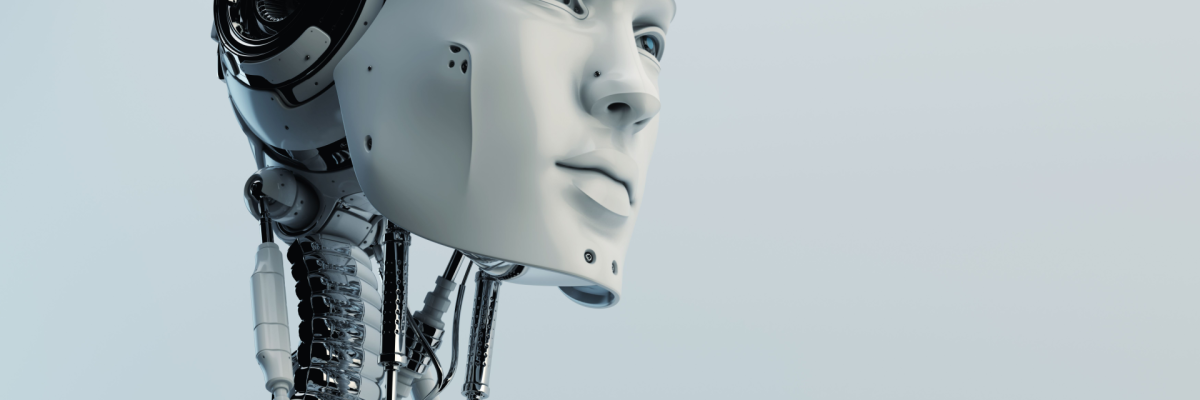



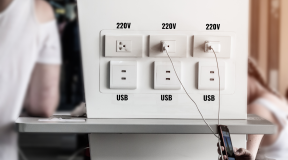

Be the first to comment
Please log in to comment